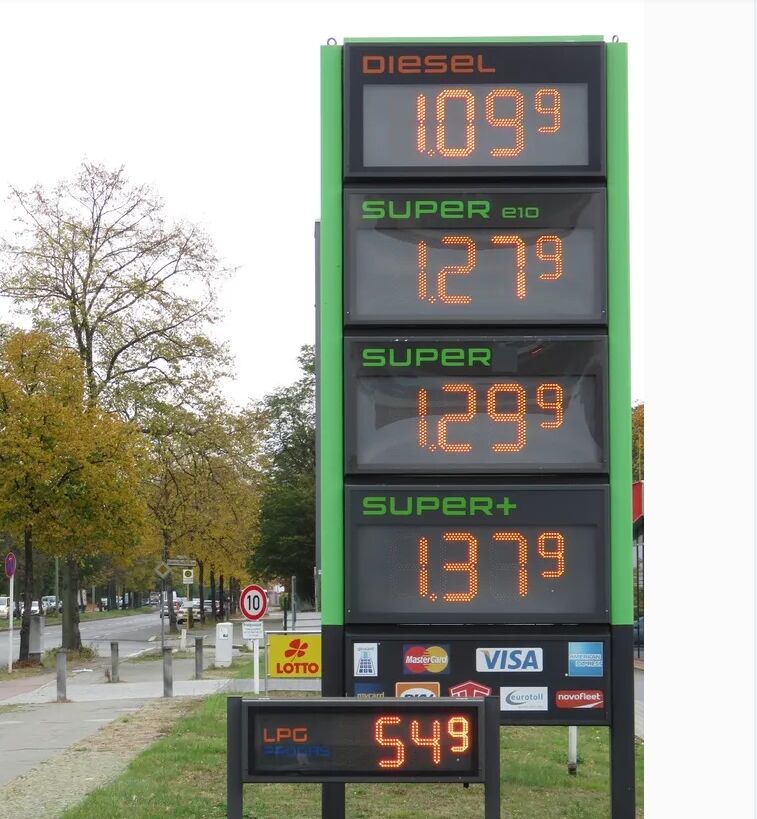Tankstationstårne: Kombination af funktionalitet med æstetisk appel
Introduktion til Tankstationstårne
Definition og Vigtighed af Tankstationstårne
Tankstationstårne, der ofte ses som utilitaristiske strukturer, har udviklet sig betydeligt gennem årene. Disse arkitektoniske bedrifter fungerer som funktionelle elementer inden for tankstationen, der giver skiltning, læ og æstetiske forbedringer, der tiltrækker kunder. I dagens konkurrenceprægede marked er designet af tankstationstårne altafgørende, da det bidrager til brandidentitet og kundeoplevelse.
Den Udviklende Rolle af Design i Tankstationer
Historisk set var tankstationer blot funktionelle enheder, der fokuserede på den mekaniske del af at tanke køretøjer. Men med ændrede forbrugerforventninger er tankstationsdesign begyndt at inkorporere kunstneriske elementer, der forbedrer den visuelle appel. Ikke længere blot steder til tankning, fungerer moderne tankstationer som sociale knudepunkter, der tiltrækker kunder med velplanlagte designs og unikke tårne, der betegner en brands essens.
Historisk Udvikling af Tankstationer
Tidlige tankstation designs
De tidlige tankstationer i det 20. århundrede var funktionelle og enkle, primært fokuseret på hastighed og service. Disse designs omfattede ofte små, kasseformede bygninger og iøjnefaldende brændstofpumper.
Bemærkelsesværdige arkitektoniske tendenser gennem årene
Gennem årtierne har tankstationsarkitektur afspejlet bredere designbevægelser, fra Art Deco i 1920'erne til det slanke modernisme i slutningen af det 20. århundrede. Hver æra bragte unikke æstetikker, såsom Googie-arkitekturen, der var fremherskende i midten af det 20. århundrede, præget af futuristiske designs og dristige farver.
Case Study: Ikoniske tankstation designs
Et bemærkelsesværdigt eksempel er Union 76 Tankstationen bygget i 1965, som repræsenterer den quintessential Googie-arkitektur med sit rumskib-lignende tag. Tilsvarende viser Repsol Tankstationen designet af Foster + Partners, minimalistiske designprincipper, der sømløst integreres i bylandskaber.
Den æstetiske appellens rolle i tankstationstårne
## At blande funktionel arkitektur med visuel design
## De mest succesfulde tankstationstårne skaber en harmonisk balance mellem funktionalitet og æstetik. Et veludformet tårn rummer ikke kun afgørende skiltning og belysning, men gør det på en måde, der forbedrer den overordnede fremtoning af tankstationen. Arkitekter i dag er opmærksomme på at integrere bæredygtige materialer og energieffektive teknologier i disse strukturer.
## Indvirkning på kundeoplevelse og branding
## Et attraktivt tankstationstårn kan betydeligt forbedre kundernes opfattelse og loyalitet. Moderne forbrugere tiltrækkes af mærker, der projicerer moderne æstetik og en forpligtelse til bæredygtighed, hvilket hæver deres oplevelse, mens de tankes. Et mindeværdigt design kan forvandle et kort pitstop til et behageligt øjeblik, der påvirker gentagne besøg.
## Moderne tendenser i tankstationdesign
## Bæredygtighed i tankstationarkitektur
I de seneste år har der været et betydeligt skift mod at inkorporere bæredygtighed i designet af tankstationer. Funktioner som grønne tage og solpaneler reducerer ikke kun miljøpåvirkningen, men kan også sænke driftsomkostningerne over tid.
Integration af smart teknologi
Tankstationstårne er i stigende grad udstyret med smart teknologi. Fra automatiserede belysningssystemer, der justerer sig baseret på omgivende lysniveauer, til brændstofpumper, der kommunikerer med mobilapps, forbedrer teknologien drifts effektiviteten, samtidig med at den forbedrer kundetilfredsheden.
Unikke designfunktioner: Forbedring af synlighed og sikkerhed
Integrationen af fremragende designfunktioner kan væsentligt øge en tankstations synlighed. Ikoniske tårne med slående belysning og farvekombinationer muliggør større genkendelse på afstand, hvilket sikrer, at kunderne hurtigt kan finde stationen, især om natten.
Case studier: Innovative tankstationstårne
Helios House: En bæredygtig model
Den Helios House i Los Angeles eksemplificerer bæredygtigt design i essentiel infrastruktur. Denne tankstation har en facade lavet af genbrugsmaterialer og har solpaneler, der producerer betydelig energi, og lever op til sit moderne økologiske løfte.
Union 76 Tankstation: Omfavner Googie-arkitektur
Som nævnt tidligere, Union 76 Tankstationen står som et fyrtårn for Googie-design. Dens dramatiske vinkler og futuristiske æstetik fanger ikke kun opmærksomhed, men markerer den også som et ikonisk vejlandemærke.
Repsol Tankstation: Moderne minimalisme
Designet til moderne bymiljøer, Repsol Tankstationen eksemplificerer minimalisme med sine slanke linjer og modulære tag-system, hvilket gør det muligt for den at blande sig ubesværet ind i sine omgivelser, mens den tiltrækker opmærksomhed.
Fremtidige retninger inden for tankstationsarkitektur
Tendenser inden for bæredygtighed og teknologi
Bæredygtige praksisser og smart teknologi forventes at forme fremtiden for tankstationers design. Vi kan forvente, at tankstationerne i morgen bliver endnu mere miljøvenlige, ved at udnytte avancerede materialer og systemer, der optimerer ressourceeffektiviteten.
Design til integration af elektriske køretøjer
Efterhånden som elektriske køretøjer vinder popularitet, skal tankstationsinfrastrukturen tilpasse sig. Fremtidige designs vil sandsynligvis inkludere dedikerede ladestationer ved siden af traditionelle brændstofpumper, hvilket udfordrer arkitekter til at genoverveje formålet med disse strukturer.
Kundeorienterede designovervejelser
Udviklingen af tankstationstårne til kundeorienterede rum kan spille en afgørende rolle i at forbedre kundeoplevelsen. Faktorer som layout, skiltning og bekvemmelighed vil forblive i fokus, efterhånden som tankstationerne tilpasser sig et konstant skiftende landskab.
Konklusion
Afslutningsvis er tankstationstårne essentielle strukturer, der både indkapsler funktionalitet og æstetisk appel. Efterhånden som vi bevæger os ind i fremtiden, vil disse designs spille en afgørende rolle i at forme kundeoplevelsen, mens de afspejler de konstant udviklende tendenser inden for bæredygtighed og teknologi. Med innovation i spidsen lover tankstationsarkitektur at forblive dynamisk og engagerende, og tilbyder mere end blot et stop for brændstof—det vil give en unik brandoplevelse for hver rejsende.
Dette indlæg har udforsket forskellige vinkler vedrørende design og betydning af tankstationstårne, med fokus på deres udvikling, æstetik og funktionel vækst i moderne arkitektur. De indsigter, der er indsamlet, vil hjælpe med at omforme vores opfattelse af disse centrale dele af vores rejselandskaber.

